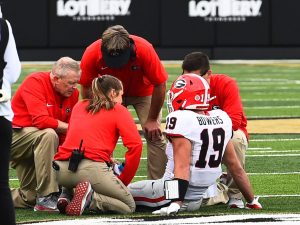
Jim Brown, Cleveland Browns and NFL legend, dies at 87
CLEVELAND, Ohio – Jim Brown’s first game as a pro was a Wednesday night exhibition opener against the Lions in 1957. It wasn’t a splashy debut. Brown wasn’t mentioned until near the end of the next day’s recap in The Plain Dealer.
“Jim Brown played briefly but the All American from Syracuse wasn’t able to shake loose,” reporter Chuck Heaton wrote.
His second exhibition game provided the splash. Brown rushed for 96 yards in a win against the Steelers. It was a 48-yard touchdown run in the third quarter that made its way into the next day’s headlines.
When Brown got back to the sideline after the play, coach Paul Brown simply said, “You’re my fullback.”
Brown’s legacy only grew from there.
When Brown died Thursday night at age 87, that legacy had come to encompass more than his time in the NFL, from which he retired as the league’s all-time leading rusher and soon became a Hall of Famer. It branched out to social activism and acting, and also included a complicated personal life.
Statues outside Cleveland Browns Stadium in Cleveland and Syracuse University remain, symbolizing his glory days as a football player.

“I think it goes without saying he’s not only the greatest Cleveland Brown of all time, but I think arguably the greatest pro football player of all time,” Browns owner Jimmy Haslam said during the 2016 statue unveiling in Cleveland.
But a combination of Brown’s desire to do more than play football and his fractured relationship with then-Browns owner Art Modell led to his retirement from the NFL after nine seasons. He was just 29 at the time, and the reigning league MVP.
“I had a full dose (of football),” Brown told Sports Illustrated in 2015. “It gave me an opportunity to express myself on a personal level. As a black man in America, there were certain disadvantages to my existence. Football gave me certain other advantages. It has been a major part of my existence.”
In his post-football life, Brown acted in more than 50 films and television shows. He also embraced social activism, famously taking a lead role in the Ali Summit, held in Cleveland in 1967 to address Muhammad Ali’s refusal to serve in the Vietnam War.
Brown later founded the Amer-I-Can empowerment program in the 1980s, targeting at-risk youth and young adults in inner cities, including those involved with gangs. It’s a program that reached other countries and continues today.








